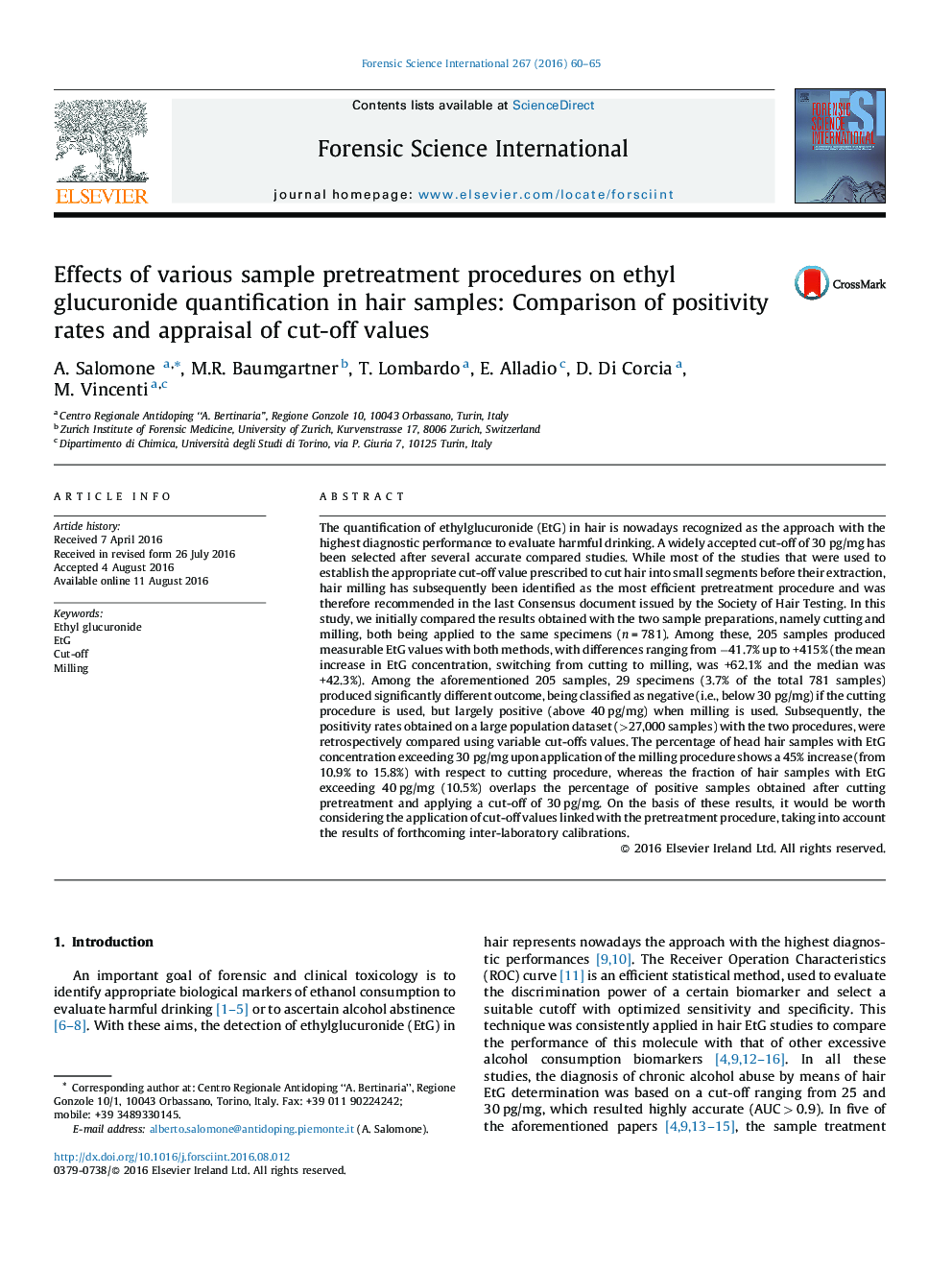| کد مقاله | کد نشریه | سال انتشار | مقاله انگلیسی | نسخه تمام متن |
|---|---|---|---|---|
| 6462632 | 1421983 | 2016 | 6 صفحه PDF | دانلود رایگان |
â¿¢Hair milling is the most efficient pretreatment procedure for EtG analysis.â¿¢Hair sample pulverization by milling leads to higher extraction yields than cutting.â¿¢The Etg results obtained from the two procedures were compared for 781 hair samples.â¿¢Hair milling produced an average increase of 35â¿¿45% of EtG detected concentrations.â¿¢The use of different cut-off is suggested, as a function of the sample pre-treatment.
The quantification of ethylglucuronide (EtG) in hair is nowadays recognized as the approach with the highest diagnostic performance to evaluate harmful drinking. A widely accepted cut-off of 30 pg/mg has been selected after several accurate compared studies. While most of the studies that were used to establish the appropriate cut-off value prescribed to cut hair into small segments before their extraction, hair milling has subsequently been identified as the most efficient pretreatment procedure and was therefore recommended in the last Consensus document issued by the Society of Hair Testing. In this study, we initially compared the results obtained with the two sample preparations, namely cutting and milling, both being applied to the same specimens (n = 781). Among these, 205 samples produced measurable EtG values with both methods, with differences ranging from ⿿41.7% up to +415% (the mean increase in EtG concentration, switching from cutting to milling, was +62.1% and the median was +42.3%). Among the aforementioned 205 samples, 29 specimens (3.7% of the total 781 samples) produced significantly different outcome, being classified as negative (i.e., below 30 pg/mg) if the cutting procedure is used, but largely positive (above 40 pg/mg) when milling is used. Subsequently, the positivity rates obtained on a large population dataset (>27,000 samples) with the two procedures, were retrospectively compared using variable cut-offs values. The percentage of head hair samples with EtG concentration exceeding 30 pg/mg upon application of the milling procedure shows a 45% increase (from 10.9% to 15.8%) with respect to cutting procedure, whereas the fraction of hair samples with EtG exceeding 40 pg/mg (10.5%) overlaps the percentage of positive samples obtained after cutting pretreatment and applying a cut-off of 30 pg/mg. On the basis of these results, it would be worth considering the application of cut-off values linked with the pretreatment procedure, taking into account the results of forthcoming inter-laboratory calibrations.
76
Journal: Forensic Science International - Volume 267, October 2016, Pages 60-65
